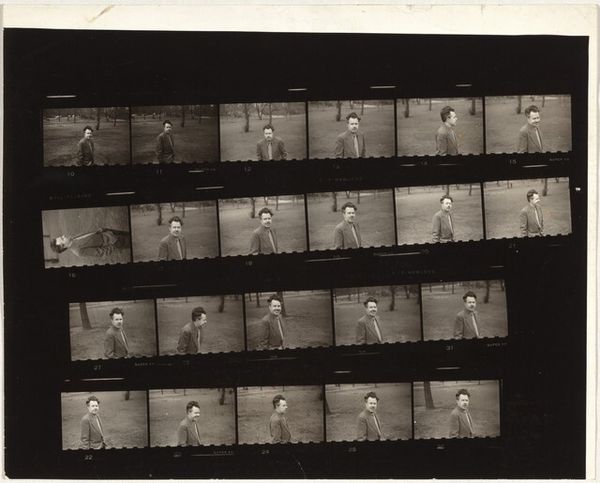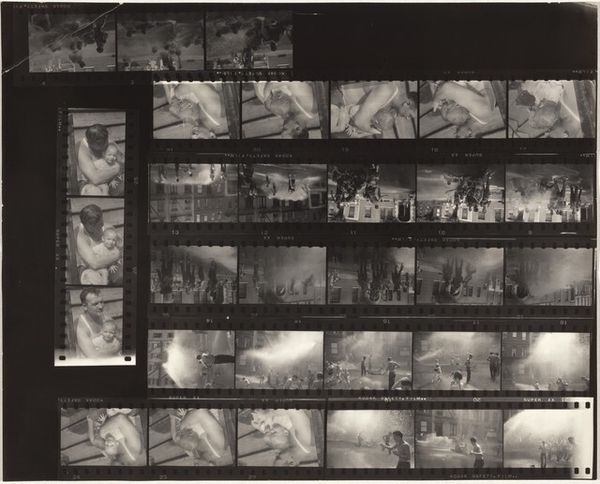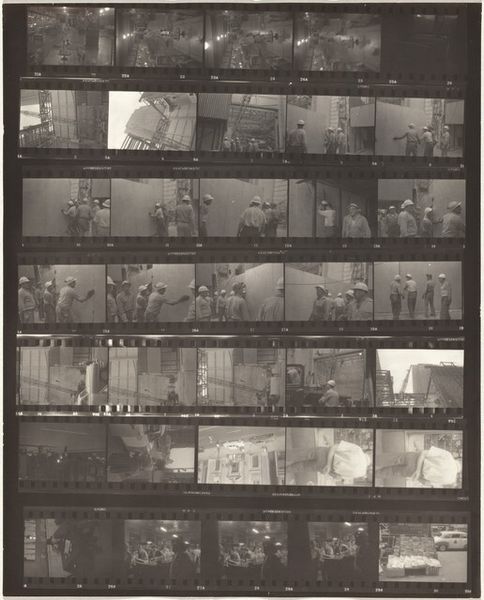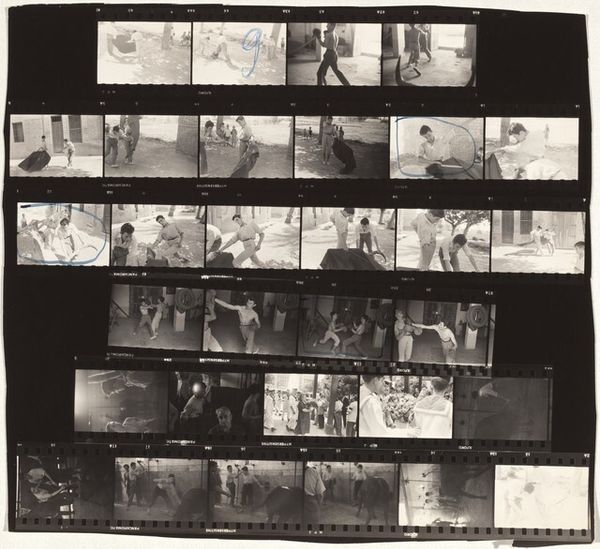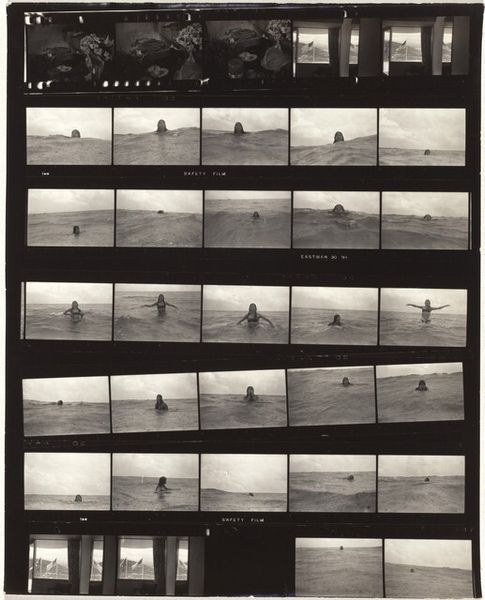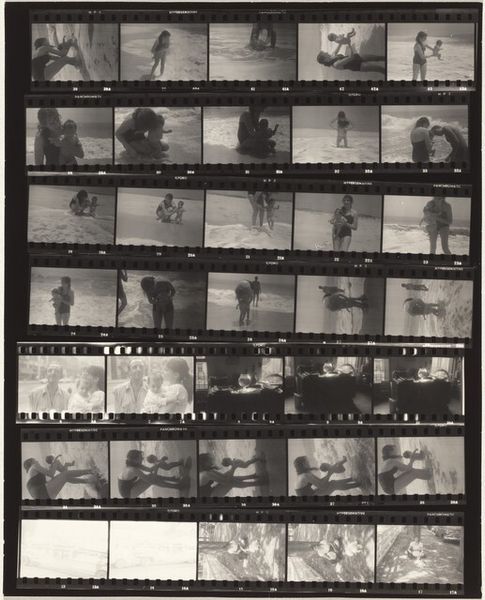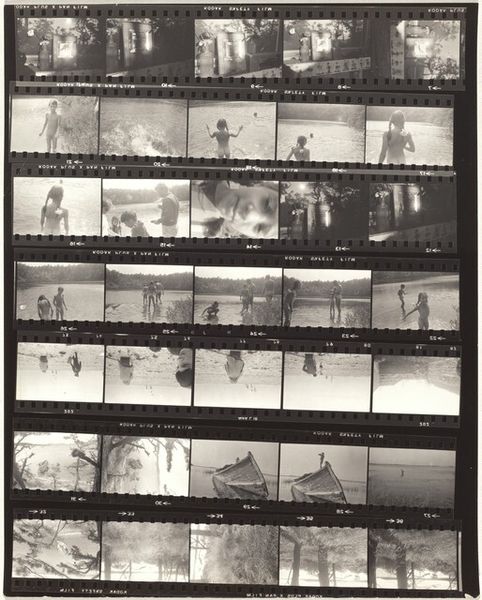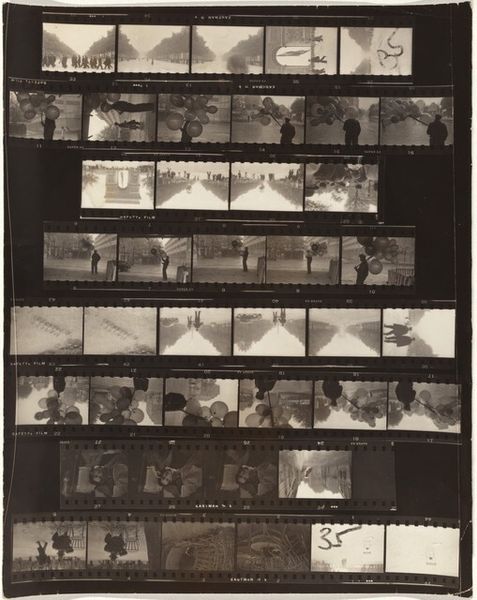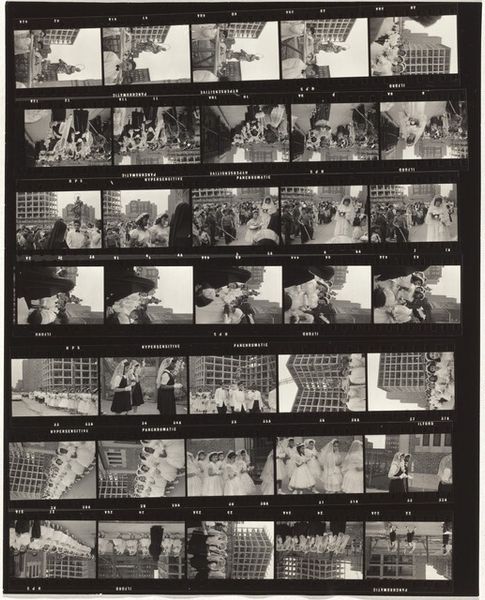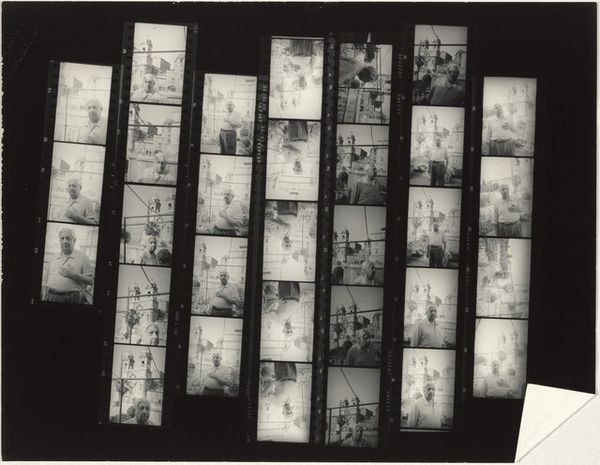
photography, gelatin-silver-print
#
portrait
#
desaturated
#
landscape
#
street-photography
#
photography
#
gelatin-silver-print
#
realism
Dimensions: sheet: 20.3 x 25.3 cm (8 x 9 15/16 in.)
Copyright: National Gallery of Art: CC0 1.0
Curator: What an intriguing piece! We're looking at Robert Frank's gelatin silver print, "Wright Morris no number," from 1951. It shows multiple frames of what appears to be a portrait session. Editor: My immediate impression is one of constraint. The sequential frames, each almost identical, evoke a sense of repetition and a limited range of expression, like being trapped within boundaries. Curator: It's fascinating how the physical materiality of the film strip—the sprocket holes, the frame edges—become part of the work itself, drawing attention to the labor and process involved in photography. You sense the mechanical nature of picture taking and seriality of the images produced. Editor: Yes, the frame emphasizes the structure. The limited tonal range also draws my attention; shades of gray flatten any opportunity to feel the spatial dimensions within each individual image. The sitter almost blends into the treescape around him. Curator: Consider the context in which Frank was working. In the postwar period, ideas about production and reproduction of images became paramount. By choosing not to select a single, definitive image, he offers us a glimpse into the act of image-making. Think, also, about gelatin silver prints themselves. These materials were relatively accessible, influencing the democratization of photography. Editor: The consistency across the frames highlights Frank's manipulation of the photographic process. Light, shadow, angle. The formal interplay directs our eyes within the small field available inside each frame, demanding attention to the subtle shifts. Curator: The mundane setting, this seemingly unremarkable public park, perhaps echoes the everyday lives of many people during the era. There’s no artifice, but this adds another layer to unpack regarding expectations around portraiture. Editor: Indeed. By examining these frames collectively, a psychological reading comes into play. The man becomes somewhat dehumanized, subjected to scrutiny through Frank’s technical rendering. I begin to question, “Who is this man in the gray?” Curator: Seeing the work in its totality makes it very striking. What were once simple, fleeting exposures become documents of artistic intention, choices related to material availability, process and cultural implications. Editor: This silver gelatin contact sheet definitely challenges any assumptions that single, great works are all there is to image making. A welcome moment of critical visual unpacking!
Comments
No comments
Be the first to comment and join the conversation on the ultimate creative platform.
